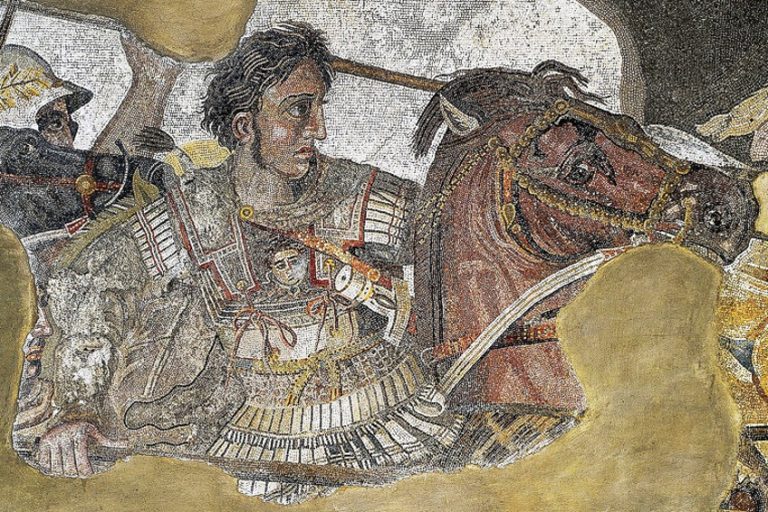Hudson River School – The Center of Art in 19th Century America
The Hudson River School, emerging in the mid-19th century, was America’s first true artistic fraternity, marking a significant chapter in the nation’s cultural history. This movement was characterized by its romantic, panoramic landscapes that celebrated the sublime beauty and grandeur of the American wilderness. Pioneered by artists like Thomas Cole and Asher B. Durand, the Hudson River School was deeply influenced by European Romanticism, yet it uniquely emphasized the pristine, untamed nature of the New World. Through their evocative depictions of the Hudson River Valley and surrounding regions, these artists fostered a sense of national pride and identity, highlighting the spiritual and transcendent qualities of the American landscape.
Key Takeaways
- The Hudson River School was central to the development of American landscape painting in the 19th century.
- Thomas Cole’s vision of the sublime in nature significantly shaped the movement’s direction and themes.
- The artwork of the Hudson River School offers a glimpse into America’s past attitudes and cultural identity with respect to the natural world.
Origins and Founding Figures
The Hudson River School emerged as a distinct movement in American art during the mid-19th century, focusing primarily on landscape painting. It was the first true artistic fraternity of its kind in the United States. The movement embodied a group of painters who shared a common vision inspired by Romanticism and characterized by a reverence for the natural world. These artists sought to represent the American landscape during a period of rapid expansion and transformation, capturing the wildness and grandeur of areas such as the Hudson River Valley, the Catskill, the Adirondack, and the White Mountains.
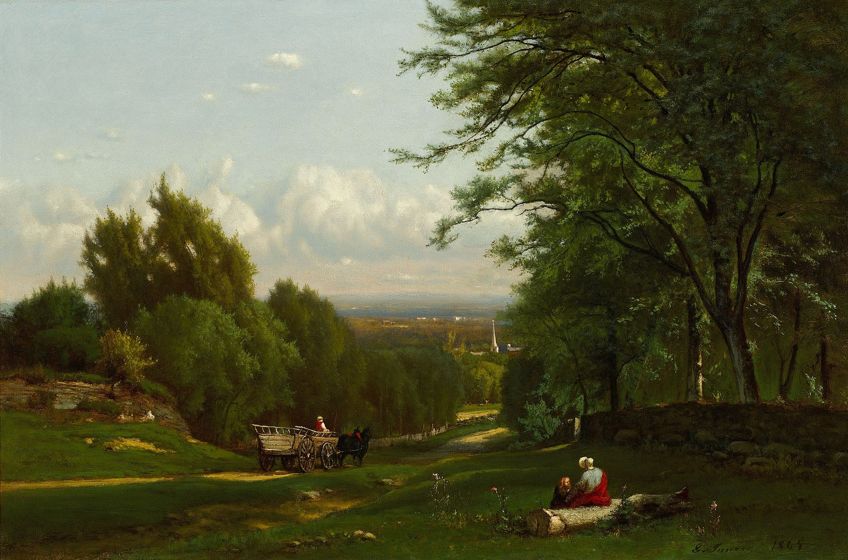
This school of art was founded by Thomas Cole, and its influences can be traced to the sublime in nature—a concept that appreciates the awe-inspiring, majestic qualities of the natural world. The aesthetic philosophy of the Hudson River School was deeply intertwined with the notions of exploration, discovery, and a spiritual response to the natural landscape. Through their works, the members of the Hudson River School forged an identity that was uniquely American, differentiating from European landscapes.
The artworks created by this collective not only depict the beauty of the American terrain but also reflect the cultural and societal attitudes of the time regarding nature and Manifest Destiny.
Thomas Cole: The Visionary
Thomas Cole was an English-born artist who became the acknowledged leader of the Hudson River School. He was deeply inspired by the wilderness of the Catskill Mountains in New York and the Romantic works of John Constable. Cole is credited with establishing a new style that celebrated the American landscape through a romantic lens. He emphasized the importance of natural scenery as a subject for American artists, which was a departure from the historical and allegorical subjects popular in Europe. His presence in New York was a catalyst for the movement’s growth, and he played a critical role in mentoring the next generation of painters at the National Academy of Design.

Influential Early Members
The Hudson River School consisted of several generations of painters. Early influential members following Cole’s vision were artists who were united by their shared interest in exploring and painting the American landscape. Some key members include:
- Asher B. Durand, a close friend of Cole, who advocated for the importance of painting nature directly from observation.
- Frederic Edwin Church, a pupil of Cole, whose grandiose landscapes embodied the expansiveness of the American spirit.
- Jasper Francis Cropsey, Albert Bierstadt, and Thomas Moran, who also created vast, detailed, and luminous paintings that captured the American landscape’s majesty.
These artists often gathered in New York City, which had become the de facto center for the Hudson River School artists, with many taking up studios in the celebrated Tenth Street Studio Building.
Their works were characterized by a detailed, panoramic, and often sublime portrayal of the American wilderness, playing a significant role in shaping the cultural identity of the burgeoning nation.
Key Artists of the Hudson River School
The Hudson River School represents a mid-19th century American art movement embodied by a group of landscape painters whose aesthetic vision was influenced by romanticism. The following artists are among the most celebrated figures of this movement.

Thomas Cole
Thomas Cole is widely regarded as the founder of the Hudson River School. His works often depicted the Hudson Valley and reflected a romantic reverence for the natural world.
He played a pivotal role in establishing the school’s themes of natural beauty and wilderness.
George Inness
Although George Inness started his career within the stylistic framework of the Hudson River School, his later work became more reflective of his personal vision, which was influenced by spiritual and philosophical ideas. Inness’s approach to landscape painting was rooted in capturing the mood and emotion of the scene.

Frederic Edwin Church
Frederic Edwin Church was a central figure of the Hudson River School known for his meticulous landscape paintings. His work often featured dramatic lighting and atmospheric effects.
His paintings are known for showcasing places from the Arctic to South America.
Albert Bierstadt
Albert Bierstadt gained acclaim for his grandiose landscapes of the American West. His paintings emphasized the majestic beauty of regions such as the Rocky Mountains and Yosemite Valley, attracting viewers with their detailed representation and luminous quality.
Concepts and Trends of the Movement
The Hudson River School is renowned for its focus on three fundamental aspects: evocative allegorical landscapes, exploration of the American West epitomized by the Rocky Mountain School, and the ethereal quality of light found in Luminism.

Allegorical Painting
Artists of the Hudson River School frequently employed allegorical elements in their landscapes to imbue them with moral or historical significance.
Themes of manifest destiny and the sublime in nature often served as backdrops for narratives about progress and the American spirit.
Rocky Mountain School
A subset of the Hudson River School, the Rocky Mountain School, emerged focusing on the grandeur of the western American landscape. This movement was marked by a distinctive trend towards capturing the jagged peaks, expansive skies, and overall majesty of the Rocky Mountains.
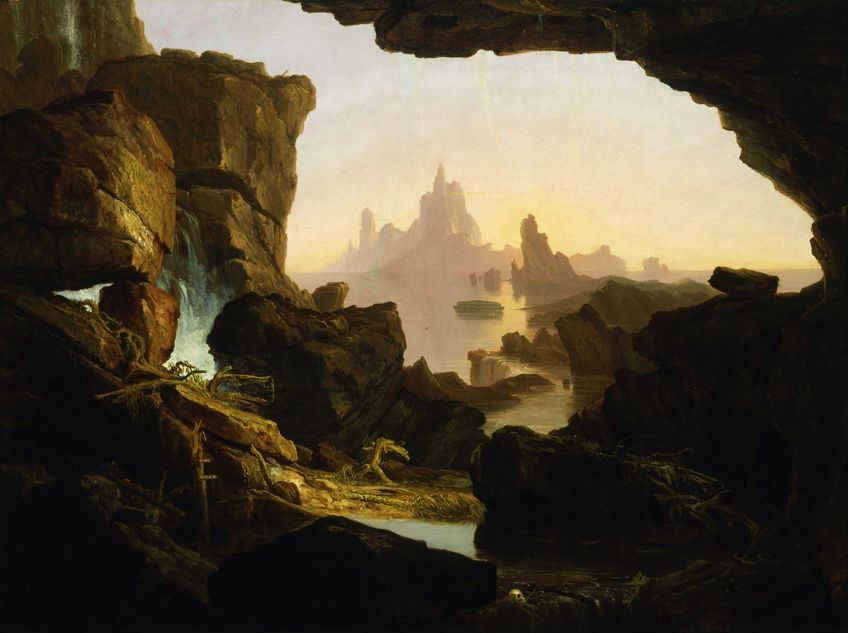
Luminism
Luminism refers to a style adopted by some painters of the Hudson River School characterized by attention to detail and the diffusion of light.
This approach results in serene, clear, and quiet compositions with a smooth, almost glassy, finish to the canvas.
Major Works and Themes
The Hudson River School uniquely captured the natural essence of the American landscape, focusing on themes of discovery, exploration, and settlement. The artists’ emphasis on manifesting a sense of the sublime through their paintings celebrated the American wilderness.

Portrayal of the American Wilderness
The Hudson River School artists dedicated themselves to portraying the unspoiled beauty of the American wilderness. They depicted regions like the Hudson River Valley, Catskill Mountains, and later on, sites of the American West such as the Rocky Mountains and Yosemite.
Themes of manifest destiny and the idea of an American paradise were evident through their works, illustrating not just a physical frontier, but a spiritual one as well.
Notable Contributions and Collections
Collections of Hudson River School art can be seen in prestigious institutions, with the Metropolitan Museum of Art housing a significant array of these works. These landscape painters were seminal in establishing a distinct American voice in fine arts and contributed to a broader cultural identity in the face of American expansion.
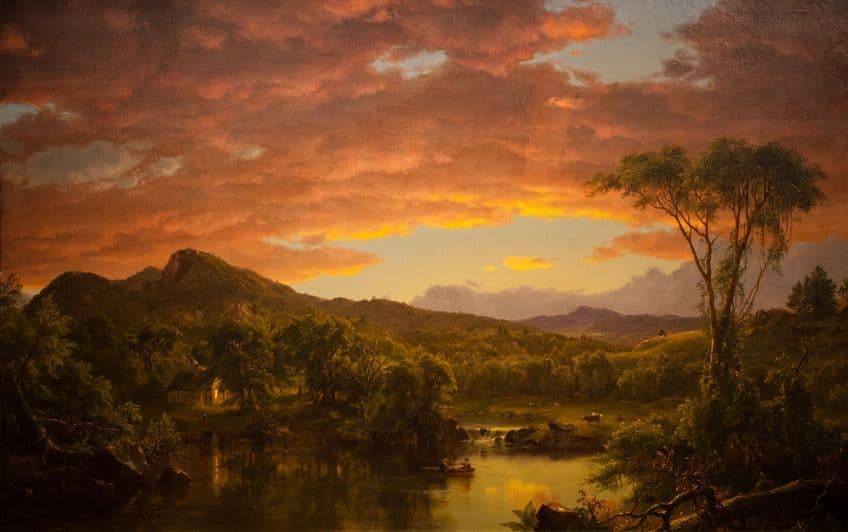
Top Artworks from the Hudson River School
- Thomas Cole’s The Course of Empire series dramatically unfolds the rise and fall of a civilization and is a highlight of the movement.
- Albert Bierstadt’s depictions of the Rocky Mountains and Yosemite celebrate immensity with delicacy.
- Fredric Edwin Church’s Niagara and View from Mount Holyoke, Northampton, Massachusetts, after a Thunderstorm — The Oxbow exemplify the technical prowess and emotion these artists imparted upon their canvases, with Niagara Falls often portrayed as a symbol of sublime natural power and beauty.
Expansion and Evolution
As the Hudson River School matured, it saw significant growth and transformation, characterized by a distinct incorporation of Luminism and an influence of European styles that reshaped its artistic expressions.
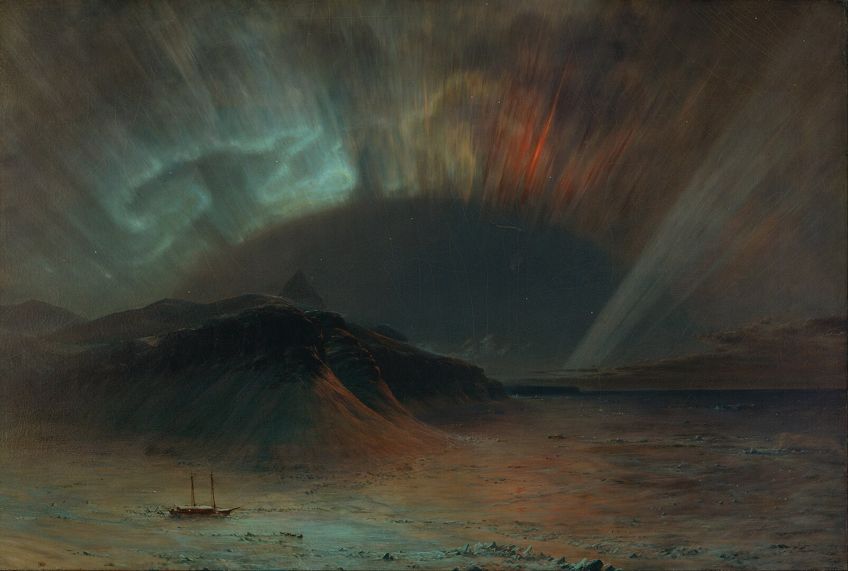
Incorporation of Luminism
Luminism, an offshoot that emphasized light and atmosphere, became integral to the Hudson River School’s development. Artists like Frederic Edwin Church and Sanford Robinson Gifford exemplified this style with a subtler palette and a masterful rendering of light effects. Their paintings often conveyed calm and a sense of the sublime, a quality that defines Luminism.
John Frederick Kensett and Martin Johnson Heade are also recognized for their luminist landscapes that capture the tranquil and detailed observation of nature.
Influence of European Styles
The Hudson River School artists were not insulated from international influences; in particular, the Barbizon School from France left a lasting imprint on their work. Painters such as Asher B. Durand assimilated the Barbizon preference for softer, more intimate portrayals of nature. Meanwhile, Albert Bierstadt and Thomas Moran propelled the school’s vision westward, integrating dramatic European styles with the vast American landscapes, further enhancing the grandeur and sense of the untamed wilderness. Their canvases reflected not only a Romantic embracement of European aesthetic principles but also an American desire to capture and communicate the essence of the continent’s expansiveness.
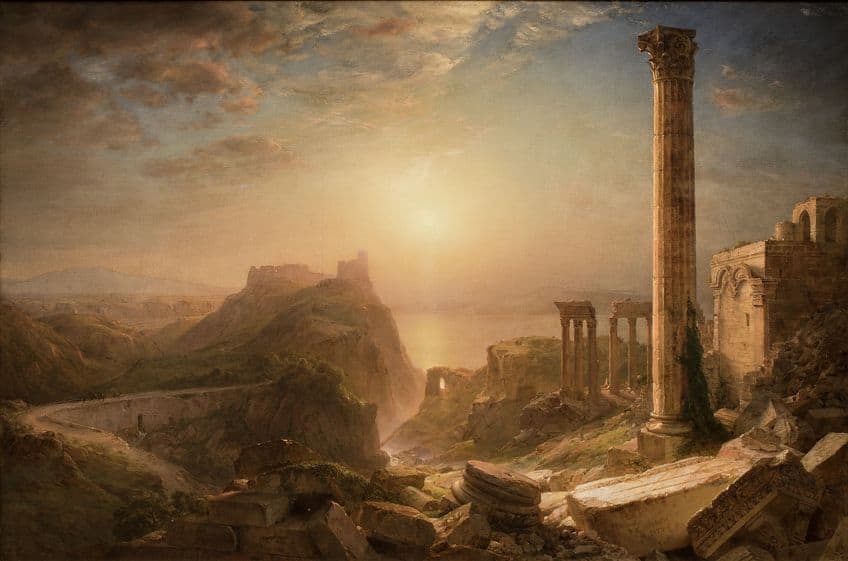
Legacy and Influence
The Hudson River School left an indelible mark on American art, presenting the nation’s landscapes with a sense of grandeur and fostering a burgeoning sense of American nationalism in the 19th century. The artists of the Hudson River School were initially celebrated for their detailed and sublime representations of the American wilderness. Their work often featured the Catskills and the White Mountains, and they were among the first to bring images of the American West to public view. Critics lauded their ability to capture the untamed aspects of nature, reflective of a country still grappling with the expansion and consequences of the Civil War.
However, in later years, some critics viewed the school’s romanticized landscape paintings as somewhat naïve and idealistic.
The School’s Place in Art History
American landscape paintings revolutionized the perception of the natural world in art. These works encapsulated the concept of American Scenery, celebrating the unique qualities of the Hudson Valley region. The Hudson River School plays a critical role in art history as the first organized group of American landscape artists, deeply influenced by Romanticism and conveying a sense of awe toward the wilderness. This movement helped establish a nationalistic approach to art, differentiating American art from European traditions.

After the Hudson River School
As the movement waned, it gave way to other styles, but the influence of the Hudson River School persisted. Collectors continued to seek these paintings, and new generations of artists drew inspiration from the School’s approach to depicting the natural world. The themes of wilderness and nature remained prominent, and the ethos of the Hudson River School contributed to the later preservationist efforts, influencing public sentiment towards the conservation of the American landscape.
The legacy of the Hudson River School endures as a pivotal moment in American art, symbolizing a profound appreciation for the nation’s natural beauty and a deep spiritual connection to the landscape. Its artists not only documented the grandeur of the American wilderness but also inspired future generations to recognize and preserve these landscapes. Their work laid the foundation for the conservation movement and continues to influence contemporary artists and environmentalists. The Hudson River School remains a testament to the power of art in shaping cultural identity and promoting environmental stewardship, reflecting an era when the majesty of nature was seen as a mirror of the sublime and the divine.
Frequently Asked Questions
Who Were the Prominent Artists Associated With the Hudson River School?
The Hudson River School included several influential artists, such as Thomas Cole, who is often called the founder of the movement. Other notable members were Asher B. Durand, Frederic Edwin Church, and Albert Bierstadt, each contributing to the movement’s legacy through their distinctive landscape paintings.
What Is the Historical Significance of the Hudson River School?
The Hudson River School was significant as America’s first major native art movement, flourishing from around 1825 to 1875. It represented a sense of national pride and identity, showcasing the natural beauty of the American landscape and often conveying themes of romanticism and transcendentalism.
What Are Some Notable Paintings That Represent the Hudson River School Style?
Notable works that define the Hudson River School style include Thomas Cole’s The Oxbow, Frederic Edwin Church’s Heart of the Andes, and Albert Bierstadt’s Among the Sierra Nevada Mountains, California. These paintings are emblematic of the movement’s focus on natural landscapes and minute detail.
What Stylistic Characteristics Define the Hudson River School of Painting?
The Hudson River School of painting is characterized by its detailed, panoramic landscapes, often with dramatic lighting and idealized views of nature. Artists in this school emphasized realism combined with romantic, poetic qualities, typically reflecting a reverence for the natural world.
Isabella studied at the University of Cape Town in South Africa and graduated with a Bachelor of Arts majoring in English Literature & Language and Psychology. Throughout her undergraduate years, she took Art History as an additional subject and absolutely loved it. Building on from her art history knowledge that began in high school, art has always been a particular area of fascination for her. From learning about artworks previously unknown to her, or sharpening her existing understanding of specific works, the ability to continue learning within this interesting sphere excites her greatly.
Her focal points of interest in art history encompass profiling specific artists and art movements, as it is these areas where she is able to really dig deep into the rich narrative of the art world. Additionally, she particularly enjoys exploring the different artistic styles of the 20th century, as well as the important impact that female artists have had on the development of art history.
Learn more about Isabella Meyer and the Art in Context Team.
Cite this Article
Isabella, Meyer, “Hudson River School – The Center of Art in 19th Century America.” Art in Context. May 27, 2024. URL: https://artincontext.org/hudson-river-school/
Meyer, I. (2024, 27 May). Hudson River School – The Center of Art in 19th Century America. Art in Context. https://artincontext.org/hudson-river-school/
Meyer, Isabella. “Hudson River School – The Center of Art in 19th Century America.” Art in Context, May 27, 2024. https://artincontext.org/hudson-river-school/.






